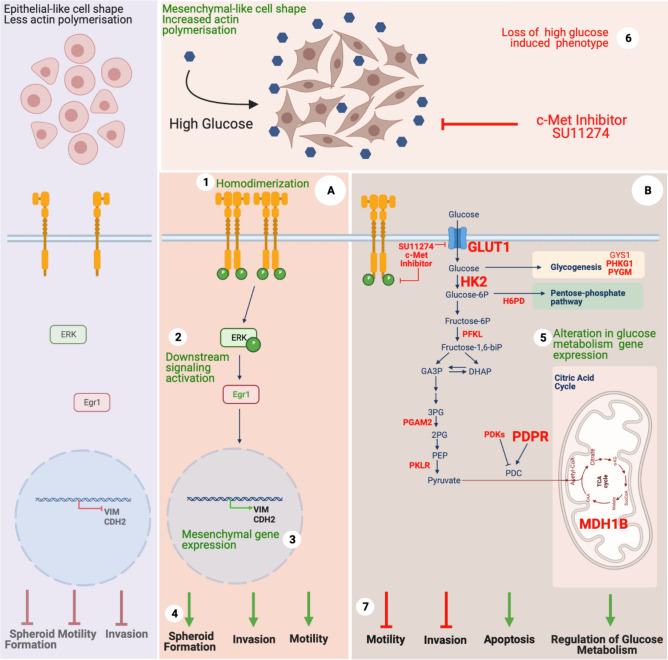Figure 6.
Graphical illustration of high glucose induced EMT via c-Met activation, its downstream signaling and associated biological cellular responses in high glucose and c-Met inhibited conditions. Green and red colored mechanisms represent active and inhibited c-Met signaling conditions, respectively. Molecular mechanisms defined in this study are summarized and numbered as following: (1) High glucose induces ligand-independent homodimerization of c-Met which in turn (2) activation of c-Met and downstream signaling, (3) promotes mesenchymal phenotype via inducing Vimentin (VIM) and N-Cadherin (CDH2) expression, (4) induces motility, invasion and spheroid formation ability. (5) Inhibition of c-Met activity by a small molecule inhibitor (SU11274) alters expression of glucose metabolism genes, (6) reverses high glucose induced mesenchymal-like phenotype and (7) aggressive behavior and eventually sensitizes HCC cells to glucose toxicity and promotes apoptosis. c-Met activated (A) and inhibited (B) conditions. Glucose metabolism genes which are confirmed with only one cell line are typed in with standard fonts, two cell lines are typed in with “bold” fonts and the genes confirmed in both in-vitro and bioinformatic analyses are typed with “big bold” fonts. Created with BioRender.com.

